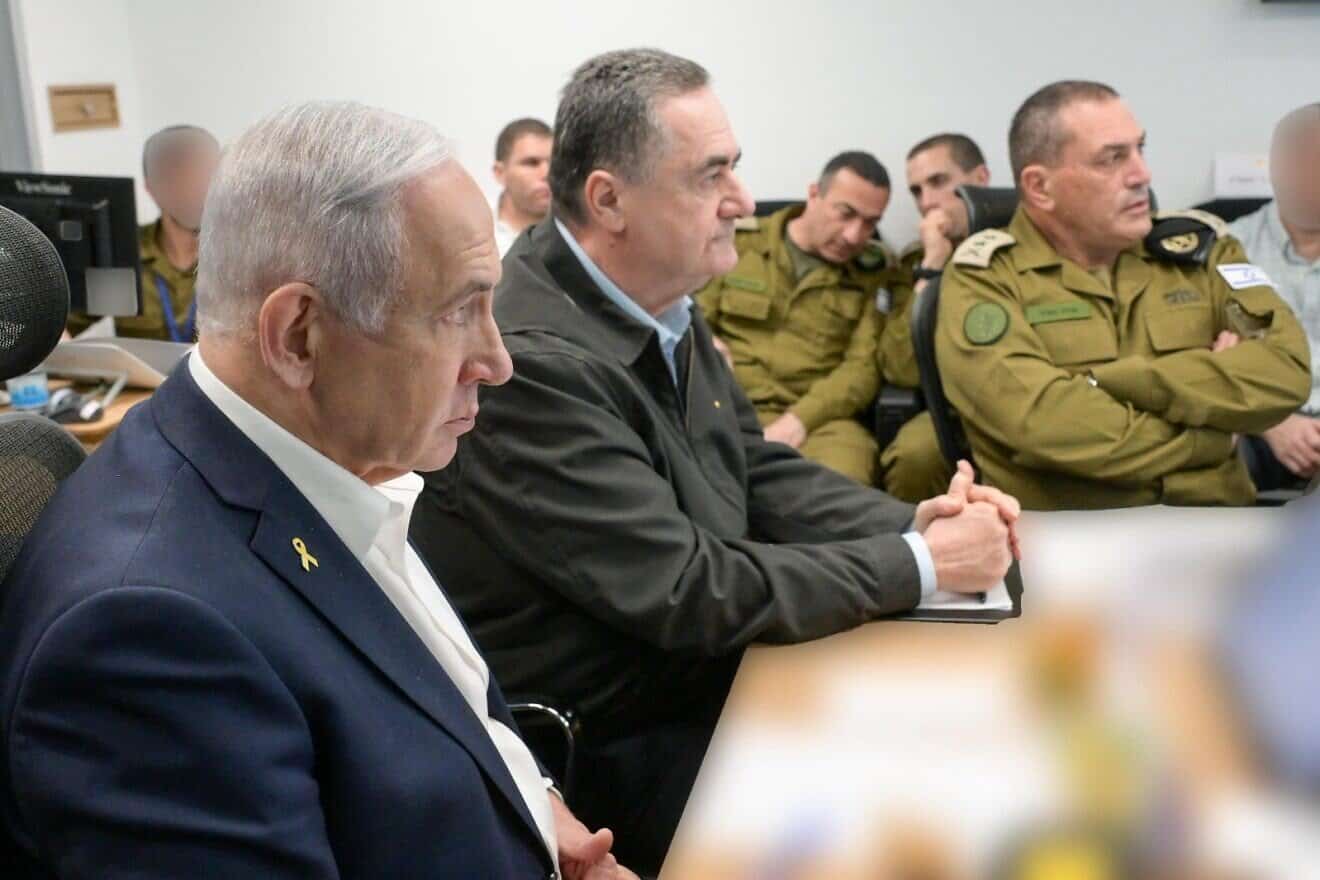(JNS) Israel’s Security Cabinet convened on Thursday night for a decisive meeting to shape the next phase of the war in Gaza, amid a high-stakes and public debate between Israeli Prime Minister Benjamin Netanyahu and the military’s top command.
The Security Cabinet decided by a “decisive majority” to approve Netanyahu’s plan to defeat Hamas, including controlling Gaza City, the premier’s office stated on Friday morning.
While Netanyahu pushed for a full military occupation of the entire Gaza Strip, Israel Defense Forces Chief of Staff Lt. Gen. Eyal Zamir reportedly warned that such a move would be a “trap” that would endanger the lives of the remaining hostages.
The argument is over how IDF ground operations should extend into the approximately 25% of the Strip where the IDF has not yet operated extensively—primarily dense areas of Gaza City and the central refugee camps—due to the high concentration of both civilians and the likely locations of the remaining 20 living Israeli hostages.
On August 5, media reports reported a tense meeting between Netanyahu and Zamir during a three-hour security consultation focused on the next steps in the Gaza Strip.
Senior political sources have in recent days stated that Zamir should resign if the decision does not suit him. However, former Israeli defense sources told JNS that the public debate between a rapid full occupation and a more methodical advance was more political theater than a substantial operational argument.
Two former defense officials, respectively, argued that the operational reality on the ground will necessitate a slow, systematic, intelligence-driven campaign and that the true key to Israel’s victory lies in strategically separating the Gazan population from Hamas’s rule.
Brig. Gen. (ret.) Hanan Geffen, a former commander of the IDF’s elite Unit 8200 intelligence unit, told JNS that in practice, there is little difference between the visions of the prime minister and the chief of staff for the next stage of the conflict.
“I will surprise you and say that in my opinion, there is no real difference between the version of the prime minister, who talks about a full occupation, and the version of the chief of staff, who talks about a methodical advance,” Geffen said. “There is a difference when the prime minister presents it in a political context—‘I want to conquer the Strip.’ The chief of staff says, ‘We want to eliminate Hamas.’ In practice, in terms of execution, I think it will be very difficult to distinguish between them, because what will dictate the execution is the experience learned in the Strip over two years.”
Geffen explained that Hamas’s strategy is to lure Israeli ground forces into prepared kill zones in dense urban areas, where small terror cells emerging from tunnels can inflict heavy casualties on maneuvering forces. “The experience of the past two years shows that this is exactly Hamas’s game; we fall precisely into Hamas’s points of strength instead of exploiting our own,” he argued. Israel’s advantage, he said, lies in its “superiority in intelligence, air power, and precision weapons.”
“Hamas wants us to enter these areas with infantry, with armor, so that we enter their fire zones where they prepared and planned to fire. We have earned the hard way, because these are areas we had to enter at the start of the war,” said Geffen. “On the other hand, our advantage is in the ability to gather precise intelligence on who is located where.”
Therefore, Geffen assessed that the IDF will be ordered to operate methodically to mitigate risks and leverage its strengths. A slower advance, he added, is also more conducive to gathering intelligence on the hostages, noting recent reports of British intelligence flights over Gaza as an example of the sophisticated, multi-national effort to locate them.
“We have assets in the air at all times, not only aircraft,” he stated. “We want to hunt Hamas and not be hunted by them. When the prime minister says to conquer Gaza, he is saying he wants to see Israeli armor everywhere. The chief of staff is saying, ‘alright,’ but not in a manner that creates harm, and let us exploit our relative advantages in intelligence, in the air and in precise firepower.”
Lt. Col. (res.) Amit Yagur, a former deputy head of the Palestinian arena at the IDF Planning Branch and a former naval intelligence officer, argued that Israel has, for too long, focused almost exclusively on the military effort while neglecting the civilian population, which he identifies as Hamas’s “soft underbelly.”
“For 90% of the time and 90% of the effort, we have focused on the military aspect—on shooting, pressure, and things of that nature,” Yagur told JNS. “I think the insight has finally landed that a military effort alone will not achieve the goal. If we want to achieve both the defeat of Hamas and the release of the hostages, it is clear that its soft underbelly is the handling of the civilian population.”
According to Yagur, the most decisive and irreversible way to defeat Hamas is to remove the civilian population from its sovereignty. “The military aspect is reversible; land we have captured, we can withdraw from,” he explained. “The moment a population sees someone else before its eyes who is now the sovereign, who distributes food, who takes care of it, it automatically allows itself to speak out, to criticize. Then the legitimacy of Hamas … as the sovereign in the Strip no longer exists. This is the effect that will bring about its cognitive defeat.”
Yagur outlined a three-pronged strategy centered on this civilian effort. First, using military pressure to facilitate the movement of the remaining population out of Hamas-controlled areas like Gaza City and central camps, and into a humanitarian zone, while flooding the Strip with so much aid that it breaks Hamas’s monopoly. Second, creating a formal “exile option” for Hamas fighters, modeled on the 1982 evacuation of PLO leader Yasser Arafat from Beirut, to create a dilemma and internal dissent within Hamas’s ranks. Third, implementing a “voluntary migration” program for civilians, arguing that even a small number of Gazans leaving would create a huge cognitive shift.
Contrary to the prevailing view in some media, Yagur assessed that Hamas in Gaza is not strong, but is actually on the verge of breaking. He pointed to the group’s recent use of what he calls its “doomsday weapons” as proof of its desperation.
“Hamas used its doomsday weapons. These two things—the starvation campaign and the claim of losing contact with hostage-takers—are its doomsday weapons. The fact that it used them only proves to me not how strong it is, but how weak Hamas in Gaza is, and how close it has come to a breaking point,” he said. “The ones keeping it alive are Hamas-abroad, who, with the encouragement of Turkey and Qatar, are more rigid than Hamas in Gaza right now.”
Yagur cited international media reports stating that the US and Israeli-backed Gaza Humanitarian Foundation will increase its distribution points in Gaza from 4 to 16. “This means that the US is going to flood the Strip with humanitarian aid, so that it is not only in the hands of Hamas. So that there will be so much aid that it will be in everyone’s hands. This would also require that we take the population out of the hands of Hamas, and that slowly, civilians leave its rule,” he added. “I do not believe it will take a long time to break Hamas in Gaza.”














